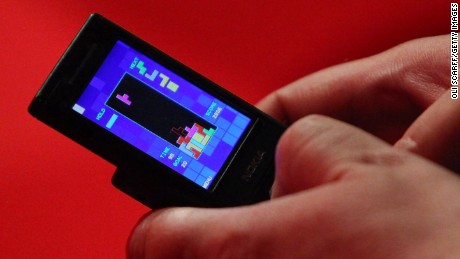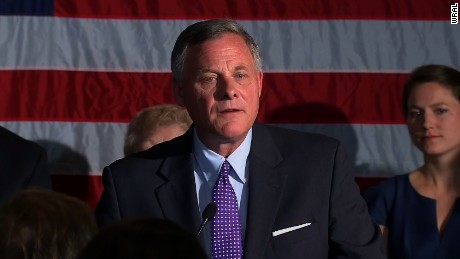‘);$vidEndSlate.removeClass(‘video__end-slate–inactive’).addClass(‘video__end-slate–active’);}};CNN.autoPlayVideoExist = (CNN.autoPlayVideoExist === true) ? true : false;var configObj = {thumb: ‘none’,video: ‘tv/2017/03/17/believer-reza-aslan-santa-muerte-orig-ff.cnn’,width: ‘100%’,height: ‘100%’,section: ‘domestic’,profile: ‘expansion’,network: ‘cnn’,markupId: ‘large-media_0’,adsection: ‘const-video-leaf’,frameWidth: ‘100%’,frameHeight: ‘100%’,posterImageOverride: {“mini”:{“height”:124,”width”:220,”type”:”jpg”,”uri”:”//i2.cdn.cnn.com/cnnnext/dam/assets/170317174610-santa-muerte-3-small-169.jpg”},”xsmall”:{“height”:173,”width”:307,”type”:”jpg”,”uri”:”//i2.cdn.cnn.com/cnnnext/dam/assets/170317174610-santa-muerte-3-medium-plus-169.jpg”},”small”:{“height”:259,”width”:460,”type”:”jpg”,”uri”:”//i2.cdn.cnn.com/cnnnext/dam/assets/170317174610-santa-muerte-3-large-169.jpg”},”medium”:{“height”:438,”width”:780,”type”:”jpg”,”uri”:”//i2.cdn.cnn.com/cnnnext/dam/assets/170317174610-santa-muerte-3-exlarge-169.jpg”},”large”:{“height”:619,”width”:1100,”type”:”jpg”,”uri”:”//i2.cdn.cnn.com/cnnnext/dam/assets/170317174610-santa-muerte-3-super-169.jpg”},”full16x9″:{“height”:900,”width”:1600,”type”:”jpg”,”uri”:”//i2.cdn.cnn.com/cnnnext/dam/assets/170317174610-santa-muerte-3-full-169.jpg”},”mini1x1″:{“height”:120,”width”:120,”type”:”jpg”,”uri”:”//i2.cdn.cnn.com/cnnnext/dam/assets/170317174610-santa-muerte-3-small-11.jpg”}}},autoStartVideo = false,callbackObj,containerEl,currentVideoCollection = [{“videoCMSUrl”:”/video/data/3.0/video/tv/2017/03/17/believer-reza-aslan-santa-muerte-orig-ff.cnn/index.xml”,”videoId”:”tv/2017/03/17/believer-reza-aslan-santa-muerte-orig-ff.cnn”,”videoUrl”:”/videos/tv/2017/03/17/believer-reza-aslan-santa-muerte-orig-ff.cnn/video/playlists/believer-with-reza-aslan/”},{“videoCMSUrl”:”/video/data/3.0/video/tv/2017/03/27/believer-reza-aslan-santa-muerte-mexico-clip-2.cnn/index.xml”,”videoId”:”tv/2017/03/27/believer-reza-aslan-santa-muerte-mexico-clip-2.cnn”,”videoUrl”:”/videos/tv/2017/03/27/believer-reza-aslan-santa-muerte-mexico-clip-2.cnn/video/playlists/believer-with-reza-aslan/”},{“videoCMSUrl”:”/video/data/3.0/video/tv/2017/03/17/believer-reza-aslan-scientology-orig-ff.cnn/index.xml”,”videoId”:”tv/2017/03/17/believer-reza-aslan-scientology-orig-ff.cnn”,”videoUrl”:”/videos/tv/2017/03/17/believer-reza-aslan-scientology-orig-ff.cnn/video/playlists/believer-with-reza-aslan/”},{“videoCMSUrl”:”/video/data/3.0/video/world/2017/03/10/believer-reza-aslan-vodou-orig-ff.cnn/index.xml”,”videoId”:”world/2017/03/10/believer-reza-aslan-vodou-orig-ff.cnn”,”videoUrl”:”/videos/world/2017/03/10/believer-reza-aslan-vodou-orig-ff.cnn/video/playlists/believer-with-reza-aslan/”},{“videoCMSUrl”:”/video/data/3.0/video/tv/2017/03/14/believer-reza-aslan-vodou-haiti-clip-2.cnn/index.xml”,”videoId”:”tv/2017/03/14/believer-reza-aslan-vodou-haiti-clip-2.cnn”,”videoUrl”:”/videos/tv/2017/03/14/believer-reza-aslan-vodou-haiti-clip-2.cnn/video/playlists/believer-with-reza-aslan/”},{“videoCMSUrl”:”/video/data/3.0/video/tv/2017/03/14/believer-reza-aslan-vodou-haiti-clip-3.cnn/index.xml”,”videoId”:”tv/2017/03/14/believer-reza-aslan-vodou-haiti-clip-3.cnn”,”videoUrl”:”/videos/tv/2017/03/14/believer-reza-aslan-vodou-haiti-clip-3.cnn/video/playlists/believer-with-reza-aslan/”},{“videoCMSUrl”:”/video/data/3.0/video/tv/2017/03/07/believer-reza-aslan-hawaii-jezus-clip-2.cnn/index.xml”,”videoId”:”tv/2017/03/07/believer-reza-aslan-hawaii-jezus-clip-2.cnn”,”videoUrl”:”/videos/tv/2017/03/07/believer-reza-aslan-hawaii-jezus-clip-2.cnn/video/playlists/believer-with-reza-aslan/”},{“videoCMSUrl”:”/video/data/3.0/video/tv/2016/08/24/reza-aslan-cult-explainer-orig.cnn/index.xml”,”videoId”:”tv/2016/08/24/reza-aslan-cult-explainer-orig.cnn”,”videoUrl”:”/videos/tv/2016/08/24/reza-aslan-cult-explainer-orig.cnn/video/playlists/believer-with-reza-aslan/”},{“videoCMSUrl”:”/video/data/3.0/video/tv/2017/03/07/believer-reza-aslan-hawaii-jezus-clip-3.cnn/index.xml”,”videoId”:”tv/2017/03/07/believer-reza-aslan-hawaii-jezus-clip-3.cnn”,”videoUrl”:”/videos/tv/2017/03/07/believer-reza-aslan-hawaii-jezus-clip-3.cnn/video/playlists/believer-with-reza-aslan/”},{“videoCMSUrl”:”/video/data/3.0/video/tv/2017/03/07/believer-reza-aslan-hawaii-jezus-clip-1.cnn/index.xml”,”videoId”:”tv/2017/03/07/believer-reza-aslan-hawaii-jezus-clip-1.cnn”,”videoUrl”:”/videos/tv/2017/03/07/believer-reza-aslan-hawaii-jezus-clip-1.cnn/video/playlists/believer-with-reza-aslan/”},{“videoCMSUrl”:”/video/data/3.0/video/world/2017/02/27/believer-reza-aslan-who-are-aghori-sahdus-india-orig-ff.cnn/index.xml”,”videoId”:”world/2017/02/27/believer-reza-aslan-who-are-aghori-sahdus-india-orig-ff.cnn”,”videoUrl”:”/videos/world/2017/02/27/believer-reza-aslan-who-are-aghori-sahdus-india-orig-ff.cnn/video/playlists/believer-with-reza-aslan/”},{“videoCMSUrl”:”/video/data/3.0/video/tv/2017/01/20/believer-reza-aslan-india-clip-1.cnn/index.xml”,”videoId”:”tv/2017/01/20/believer-reza-aslan-india-clip-1.cnn”,”videoUrl”:”/videos/tv/2017/01/20/believer-reza-aslan-india-clip-1.cnn/video/playlists/believer-with-reza-aslan/”},{“videoCMSUrl”:”/video/data/3.0/video/tv/2017/02/08/believer-with-reza-aslan-call-to-action-orig-ff.cnn/index.xml”,”videoId”:”tv/2017/02/08/believer-with-reza-aslan-call-to-action-orig-ff.cnn”,”videoUrl”:”/videos/tv/2017/02/08/believer-with-reza-aslan-call-to-action-orig-ff.cnn/video/playlists/believer-with-reza-aslan/”},{“videoCMSUrl”:”/video/data/3.0/video/world/2017/03/06/believer-reza-aslan-hinduism-beliefs-explained.cnn/index.xml”,”videoId”:”world/2017/03/06/believer-reza-aslan-hinduism-beliefs-explained.cnn”,”videoUrl”:”/videos/world/2017/03/06/believer-reza-aslan-hinduism-beliefs-explained.cnn/video/playlists/believer-with-reza-aslan/”},{“videoCMSUrl”:”/video/data/3.0/video/tv/2017/01/06/believer-trailer.cnn-promos/index.xml”,”videoId”:”tv/2017/01/06/believer-trailer.cnn-promos”,”videoUrl”:”/videos/tv/2017/01/06/believer-trailer.cnn-promos/video/playlists/believer-with-reza-aslan/”}],currentVideoCollectionId = ”,isLivePlayer = false,moveToNextTimeout,mutePlayerEnabled = false,nextVideoId = ”,nextVideoUrl = ”,turnOnFlashMessaging = false,videoPinner,videoEndSlateImpl;if (CNN.autoPlayVideoExist === false) {autoStartVideo = true;if (autoStartVideo === true) {if (turnOnFlashMessaging === true) {autoStartVideo = false;containerEl = jQuery(document.getElementById(configObj.markupId));CNN.VideoPlayer.showFlashSlate(containerEl);} else {CNN.autoPlayVideoExist = true;}}}configObj.autostart = autoStartVideo;CNN.VideoPlayer.setPlayerProperties(configObj.markupId, autoStartVideo, isLivePlayer, mutePlayerEnabled);CNN.VideoPlayer.setFirstVideoInCollection(currentVideoCollection, configObj.markupId);var embedLinkHandler = {},videoPinner,embedCodeCopy;function onVideoCarouselItemClicked(evt) {‘use strict’;var videoId,articleElem,videoPlayer,thumbImageElem,thumbImageLargeSource,overrides = {videoCollection: this.videoCollection,autostart: false},shouldStartVideo = false,playerInstance;try {articleElem = jQuery(evt.currentTarget).find(‘article’);thumbImageElem = jQuery(articleElem).find(‘.media__image’);videoId = articleElem.data().videoId;if (CNN.VideoPlayer.getLibraryName(configObj.markupId) === ‘fave’) {playerInstance = FAVE.player.getInstance(configObj.markupId);if (CNN.Utils.existsObject(playerInstance) &&typeof playerInstance.getVideoData === ‘function’ &&playerInstance.getVideoData().id !== videoId) {/* Remove videoobject metadata script.If the user click other than initial loaded video */jQuery(articleElem).closest(‘.cn-carousel-medium-strip’).parent().find(‘script[name=”metaScript”]’).remove();playerInstance.play(videoId, overrides);}} else {videoPlayer = CNNVIDEOAPI.CNNVideoManager.getInstance().getPlayerByContainer(configObj.markupId);if (videoPlayer && videoPlayer.videoInstance) {/** if videoPlayer.videoInstance.cvp is null that means it’s not initialized yet so* pass in the thumbnail, too.*/if (!videoPlayer.videoInstance.cvp) {if (typeof thumbImageElem !== ‘undefined’ && thumbImageElem !== null) {thumbImageLargeSource = thumbImageElem.data() && thumbImageElem.data().srcLarge ? thumbImageElem.data().srcLarge : ‘none’;}overrides.thumb = thumbImageLargeSource ? thumbImageLargeSource : ‘none’;shouldStartVideo = true;}if (videoPlayer.videoInstance.config) {if (videoPlayer.videoInstance.config.video !== videoId) {/* Remove videoobject metadata script.If the user click other than initial loaded video */jQuery(articleElem).closest(‘.cn-carousel-medium-strip’).parent().find(‘script[name=”metaScript”]’).remove();CNNVIDEOAPI.CNNVideoManager.getInstance().playVideo(configObj.markupId, videoId, overrides);}/* Video player isn’t autoplay, so init itif (shouldStartVideo && this.carouselClickAutostartsVideo) {try {videoPlayer.videoInstance.start();} catch (startError) {console.log(“error in initializing video player” + startError);}}*/}}}} catch (error) {console.log(“error in initializing video player” + error);}}function setInitialVideoEmbed() {}function initialize(){var carousel = jQuery(document.getElementById(‘cn-current_video_collection’)).find(‘.js-owl-carousel’),owl;if (carousel) {carousel.find(‘.cn__column.carousel__content__item’).find(‘a’).removeAttr(‘href’);jQuery(carousel).on(‘click’, ‘.cn__column.carousel__content__item’, onVideoCarouselItemClicked);}}if (CNN.VideoPlayer.getLibraryName(configObj.markupId) === ‘videoLoader’) {window.CNNVideoAPILoadCompleteHandlers = window.CNNVideoAPILoadCompleteHandlers ? window.CNNVideoAPILoadCompleteHandlers : [];window.CNNVideoAPILoadCompleteHandlers.push(initialize);window.CNNVideoAPILoadCompleteHandlers.push(setInitialVideoEmbed);} else {initialize();}CNN.INJECTOR.executeFeature(‘videx’).done(function () {var initMeta = {id:”tv/2017/03/17/believer-reza-aslan-santa-muerte-orig-ff.cnn”, isEmbeddable: “yes”};CNN.Videx.EmbedButton.updateCode(initMeta);}).fail(function () {throw ‘Unable to fetch the videx bundle.’;});function updateCurrentlyPlaying(videoId) {var videoCollectionId = ‘current_video_collection’,videocardContents = getCurrentVideoCardContents(videoId),carousel = jQuery(document.getElementById(‘cn-current_video_collection’)).find(‘.js-owl-carousel’),domain = CNN.Host.domain || (document.location.protocol + ‘//’ + document.location.hostname),owl,$owlFirstItem,$owlPrevItem,showDetailsSpanContent = ”,gigyaShareElement,showIndex,whatsappShareElement,$carouselContentItems = jQuery(‘.carousel__content__item’, document.getElementById(‘cn-current_video_collection’));gigyaShareElement = jQuery(‘div.js-gigya-sharebar’);if (typeof gigyaShareElement !== ‘undefined’) {jQuery(gigyaShareElement).attr(‘data-title’, videocardContents.headlinePlainText || ”);jQuery(gigyaShareElement).attr(‘data-description’, videocardContents.descriptionPlainText || ”);jQuery(gigyaShareElement).attr(‘data-link’, domain + videocardContents.url || ”);jQuery(gigyaShareElement).attr(‘data-image-src’, videocardContents.media.elementContents.imageUrl || ”);}whatsappShareElement = jQuery(‘div.share-bar-whatsapp-container’);if (typeof whatsappShareElement !== ‘undefined’) {jQuery(whatsappShareElement).attr(‘data-title’, videocardContents.headlinePlainText || ”);jQuery(whatsappShareElement).attr(‘data-storyurl’, domain + videocardContents.url || ”);}if (carousel && currentVideoCollectionContainsId(videoId)) {owl = carousel.data(‘owl.carousel’) || {};showIndex = getCurrentVideoIndex(videoId);if (typeof owl.to === ‘function’) {owl.to(showIndex);}$owlPrevItem = CNN.Utils.exists(owl.$element) ? owl.$element.find(‘.cd.cd–active’) : $carouselContentItems.find(‘.cd.cd–active’);$owlPrevItem.removeClass(‘cd–active’);$owlPrevItem.find(‘.media__over-text’).remove();$owlPrevItem.find(‘.media__icon’).show();$owlFirstItem = CNN.Utils.exists(owl._items) ? jQuery(owl._items[showIndex]) : $carouselContentItems.eq(showIndex);$owlFirstItem.find(‘.cd’).addClass(‘cd–active’);$owlFirstItem.find(‘.media a:first-child’).append(‘
Now Playing
‘);if (Modernizr && !Modernizr.phone) {$owlFirstItem.find(‘.media__icon’).hide();}}CNN.Videx.Metadata.init({dateCreated: videocardContents.dateCreated,descriptionText: videocardContents.descriptionText,duration: videocardContents.duration,sourceLink: videocardContents.sourceLink,sourceName: videocardContents.sourceName,title: videocardContents.headlineText},{videoCollectionDivId: ‘cn-m2c453’,videoDescriptionDivId: ‘js-video_description-m2c453’,videoDurationDivId: ‘js-video_duration-m2c453’,videoTitleDivId: ‘js-leaf-video_headline-m2c453’,videoSourceDivId: ‘js-video_sourceName-m2c453’});if (CNN.Utils.exists(videocardContents.showName)) {if (CNN.Utils.exists(videocardContents.showUrl)) {showDetailsSpanContent = ‘‘ + videocardContents.showName + ‘ | ‘;} else {showDetailsSpanContent = videocardContents.showName + ‘ | ‘;}}fastdom.measure(function getShowInfo() {var $show = jQuery(‘.metadata__show’),$isShowDetailsSpanExists = $show.find(‘span’).hasClass(‘metadata–show__name’),$showName = jQuery(‘.metadata–show__name’);fastdom.mutate(function updateShowInfo() {if (!$isShowDetailsSpanExists) {$show.prepend(‘‘ + showDetailsSpanContent + ‘‘);} else {$showName.html(showDetailsSpanContent);}});});if (typeof (history) !== ‘undefined’ && typeof (history.replaceState) !== ‘undefined’) {history.replaceState(”, ”, videocardContents.url);document.title = videocardContents.headlineText ? videocardContents.headlineText : ”;}}function getCurrentVideoCardContents(currentVideoId) {var containerContents = [{“branding”:””,”cardContents”:{“auxiliaryText”:””,”bannerText”:[],”bannerHasATag”:false,”bannerPosition”:””,”brandingLink”:””,”brandingImageUrl”:””,”brandingTextHead”:””,”brandingTextSub”:””,”cardSectionName”:”tv”,”contentType”:””,”cta”:”share”,”descriptionText”:[“Religious scholar Reza Aslan explores the fastest growing folk religion in the Americas: Santa Muerte. \”Believer\” airs every Sunday at 10p ET.”],”descriptionPlainText”:”Religious scholar Reza Aslan explores the fastest growing folk religion in the Americas: Santa Muerte. \”Believer\” airs every Sunday at 10p ET.”,”headlinePostText”:””,”headlinePreText”:””,”headlineText”:”What is Santa Muerte?”,”headlinePlainText”:”What is Santa Muerte?”,”iconImageUrl”:””,”iconType”:”video”,”isMobileBannerText”:false,”kickerText”:””,”maximizedBannerSize”:[],”media”:{“contentType”:”image”,”type”:”element”,”cutFormat”:”16:9″,”elementContents”:{“caption”:””,”imageAlt”:””,”imageUrl”:”//i2.cdn.cnn.com/cnnnext/dam/assets/170317174610-santa-muerte-3-large-169.jpg”,”label”:””,”galleryTitle”:””,”head”:””,”cuts”:{“mini”:{“height”:124,”width”:220,”type”:”jpg”,”uri”:”//i2.cdn.cnn.com/cnnnext/dam/assets/170317174610-santa-muerte-3-small-169.jpg”},”xsmall”:{“height”:173,”width”:307,”type”:”jpg”,”uri”:”//i2.cdn.cnn.com/cnnnext/dam/assets/170317174610-santa-muerte-3-medium-plus-169.jpg”},”small”:{“height”:259,”width”:460,”type”:”jpg”,”uri”:”//i2.cdn.cnn.com/cnnnext/dam/assets/170317174610-santa-muerte-3-large-169.jpg”},”medium”:{“height”:438,”width”:780,”type”:”jpg”,”uri”:”//i2.cdn.cnn.com/cnnnext/dam/assets/170317174610-santa-muerte-3-exlarge-169.jpg”},”large”:{“height”:619,”width”:1100,”type”:”jpg”,”uri”:”//i2.cdn.cnn.com/cnnnext/dam/assets/170317174610-santa-muerte-3-super-169.jpg”},”full16x9″:{“height”:900,”width”:1600,”type”:”jpg”,”uri”:”//i2.cdn.cnn.com/cnnnext/dam/assets/170317174610-santa-muerte-3-full-169.jpg”},”mini1x1″:{“height”:120,”width”:120,”type”:”jpg”,”uri”:”//i2.cdn.cnn.com/cnnnext/dam/assets/170317174610-santa-muerte-3-small-11.jpg”}},”responsiveImage”:true},”duration”:”1:52″},”noFollow”:false,”overMediaText”:””,”sectionUri”:””,”showSocialSharebar”:false,”shortUrl”:””,”statusText”:””,”statusColor”:””,”targetType”:””,”timestampDisplay”:””,”timestampUtc”:””,”lastModifiedText”:””,”lastModifiedState”:””,”type”:”card”,”url”:”/videos/tv/2017/03/17/believer-reza-aslan-santa-muerte-orig-ff.cnn/video/playlists/believer-with-reza-aslan/”,”width”:””,”height”:””,”videoCMSUri”:”/video/data/3.0/video/tv/2017/03/17/believer-reza-aslan-santa-muerte-orig-ff.cnn/index.xml”,”videoId”:”tv/2017/03/17/believer-reza-aslan-santa-muerte-orig-ff.cnn”,”adSection”:”const-video-leaf”,”dateCreated”:”5:37 PM ET, Fri March 17, 2017″,”sourceName”:”CNN”,”sourceLink”:””,”showName”:”Believer with Reza Aslan”,”showUrl”:”/shows/believer”,”videoCollectionUrl”:”/video/playlists/believer-with-reza-aslan/”},”contentType”:”video”,”maximizedBanner”:false,”type”:”card”},{“branding”:””,”cardContents”:{“auxiliaryText”:””,”bannerText”:[],”bannerHasATag”:false,”bannerPosition”:””,”brandingLink”:””,”brandingImageUrl”:””,”brandingTextHead”:””,”brandingTextSub”:””,”cardSectionName”:”tv”,”contentType”:””,”cta”:”share”,”descriptionText”:[“A Catholic priest explains why his religion sees the fast-growing folk religion of Santa Muerte as a cult. \”Believer with Reza Aslan\” airs Sundays at 10p ET/PT on CNN and 0200 GMT on CNN International.”],”descriptionPlainText”:”A Catholic priest explains why his religion sees the fast-growing folk religion of Santa Muerte as a cult. \”Believer with Reza Aslan\” airs Sundays at 10p ET/PT on CNN and 0200 GMT on CNN International.”,”headlinePostText”:””,”headlinePreText”:””,”headlineText”:”Catholic church: Santa Muerte is a ‘satanic cult'”,”headlinePlainText”:”Catholic church: Santa Muerte is a ‘satanic cult'”,”iconImageUrl”:””,”iconType”:”video”,”isMobileBannerText”:false,”kickerText”:””,”maximizedBannerSize”:[],”media”:{“contentType”:”image”,”type”:”element”,”cutFormat”:”16:9″,”elementContents”:{“caption”:”Believer Reza Aslan Santa Muerte Mexico Clip 2_00004312.jpg”,”imageAlt”:”Believer Reza Aslan Santa Muerte Mexico Clip 2_00004312″,”imageUrl”:”//i2.cdn.cnn.com/cnnnext/dam/assets/170327104318-believer-reza-aslan-santa-muerte-mexico-clip-2-00004312-large-169.jpg”,”label”:””,”galleryTitle”:””,”head”:””,”cuts”:{“mini”:{“height”:124,”width”:220,”type”:”jpg”,”uri”:”//i2.cdn.cnn.com/cnnnext/dam/assets/170327104318-believer-reza-aslan-santa-muerte-mexico-clip-2-00004312-small-169.jpg”},”xsmall”:{“height”:173,”width”:307,”type”:”jpg”,”uri”:”//i2.cdn.cnn.com/cnnnext/dam/assets/170327104318-believer-reza-aslan-santa-muerte-mexico-clip-2-00004312-medium-plus-169.jpg”},”small”:{“height”:259,”width”:460,”type”:”jpg”,”uri”:”//i2.cdn.cnn.com/cnnnext/dam/assets/170327104318-believer-reza-aslan-santa-muerte-mexico-clip-2-00004312-large-169.jpg”},”medium”:{“height”:438,”width”:780,”type”:”jpg”,”uri”:”//i2.cdn.cnn.com/cnnnext/dam/assets/170327104318-believer-reza-aslan-santa-muerte-mexico-clip-2-00004312-exlarge-169.jpg”},”large”:{“height”:619,”width”:1100,”type”:”jpg”,”uri”:”//i2.cdn.cnn.com/cnnnext/dam/assets/170327104318-believer-reza-aslan-santa-muerte-mexico-clip-2-00004312-super-169.jpg”},”full16x9″:{“height”:900,”width”:1600,”type”:”jpg”,”uri”:”//i2.cdn.cnn.com/cnnnext/dam/assets/170327104318-believer-reza-aslan-santa-muerte-mexico-clip-2-00004312-full-169.jpg”},”mini1x1″:{“height”:120,”width”:120,”type”:”jpg”,”uri”:”//i2.cdn.cnn.com/cnnnext/dam/assets/170327104318-believer-reza-aslan-santa-muerte-mexico-clip-2-00004312-small-11.jpg”}},”responsiveImage”:true},”duration”:”1:16″},”noFollow”:false,”overMediaText”:””,”sectionUri”:””,”showSocialSharebar”:false,”shortUrl”:””,”statusText”:””,”statusColor”:””,”targetType”:””,”timestampDisplay”:””,”timestampUtc”:””,”lastModifiedText”:””,”lastModifiedState”:””,”type”:”card”,”url”:”/videos/tv/2017/03/27/believer-reza-aslan-santa-muerte-mexico-clip-2.cnn/video/playlists/believer-with-reza-aslan/”,”width”:””,”height”:””,”videoCMSUri”:”/video/data/3.0/video/tv/2017/03/27/believer-reza-aslan-santa-muerte-mexico-clip-2.cnn/index.xml”,”videoId”:”tv/2017/03/27/believer-reza-aslan-santa-muerte-mexico-clip-2.cnn”,”adSection”:”const-video-leaf”,”dateCreated”:”10:19 AM ET, Mon March 27, 2017″,”sourceName”:”CNN”,”sourceLink”:””,”showName”:”Believer with Reza Aslan”,”showUrl”:”/shows/believer”,”videoCollectionUrl”:”/video/playlists/believer-with-reza-aslan/”},”contentType”:”video”,”maximizedBanner”:false,”type”:”card”},{“branding”:””,”cardContents”:{“auxiliaryText”:””,”bannerText”:[],”bannerHasATag”:false,”bannerPosition”:””,”brandingLink”:””,”brandingImageUrl”:””,”brandingTextHead”:””,”brandingTextSub”:””,”cardSectionName”:”tv”,”contentType”:””,”cta”:”share”,”descriptionText”:[“Religious scholar Reza Aslan explores the origin and central ideas of Scientology, the new American religion founded by L. Ron Hubbard. \”Believer\” airs every Sunday at 10p ET.”],”descriptionPlainText”:”Religious scholar Reza Aslan explores the origin and central ideas of Scientology, the new American religion founded by L. Ron Hubbard. \”Believer\” airs every Sunday at 10p ET.”,”headlinePostText”:””,”headlinePreText”:””,”headlineText”:”What is Scientology?”,”headlinePlainText”:”What is Scientology?”,”iconImageUrl”:””,”iconType”:”video”,”isMobileBannerText”:false,”kickerText”:””,”maximizedBannerSize”:[],”media”:{“contentType”:”image”,”type”:”element”,”cutFormat”:”16:9″,”elementContents”:{“caption”:””,”imageAlt”:””,”imageUrl”:”//i2.cdn.cnn.com/cnnnext/dam/assets/170317122246-scientology-thumb-4-large-169.jpg”,”label”:””,”galleryTitle”:””,”head”:””,”cuts”:{“mini”:{“height”:124,”width”:220,”type”:”jpg”,”uri”:”//i2.cdn.cnn.com/cnnnext/dam/assets/170317122246-scientology-thumb-4-small-169.jpg”},”xsmall”:{“height”:173,”width”:307,”type”:”jpg”,”uri”:”//i2.cdn.cnn.com/cnnnext/dam/assets/170317122246-scientology-thumb-4-medium-plus-169.jpg”},”small”:{“height”:259,”width”:460,”type”:”jpg”,”uri”:”//i2.cdn.cnn.com/cnnnext/dam/assets/170317122246-scientology-thumb-4-large-169.jpg”},”medium”:{“height”:438,”width”:780,”type”:”jpg”,”uri”:”//i2.cdn.cnn.com/cnnnext/dam/assets/170317122246-scientology-thumb-4-exlarge-169.jpg”},”large”:{“height”:619,”width”:1100,”type”:”jpg”,”uri”:”//i2.cdn.cnn.com/cnnnext/dam/assets/170317122246-scientology-thumb-4-super-169.jpg”},”full16x9″:{“height”:900,”width”:1600,”type”:”jpg”,”uri”:”//i2.cdn.cnn.com/cnnnext/dam/assets/170317122246-scientology-thumb-4-full-169.jpg”},”mini1x1″:{“height”:120,”width”:120,”type”:”jpg”,”uri”:”//i2.cdn.cnn.com/cnnnext/dam/assets/170317122246-scientology-thumb-4-small-11.jpg”}},”responsiveImage”:true},”duration”:”1:40″},”noFollow”:false,”overMediaText”:””,”sectionUri”:””,”showSocialSharebar”:false,”shortUrl”:””,”statusText”:””,”statusColor”:””,”targetType”:””,”timestampDisplay”:””,”timestampUtc”:””,”lastModifiedText”:””,”lastModifiedState”:””,”type”:”card”,”url”:”/videos/tv/2017/03/17/believer-reza-aslan-scientology-orig-ff.cnn/video/playlists/believer-with-reza-aslan/”,”width”:””,”height”:””,”videoCMSUri”:”/video/data/3.0/video/tv/2017/03/17/believer-reza-aslan-scientology-orig-ff.cnn/index.xml”,”videoId”:”tv/2017/03/17/believer-reza-aslan-scientology-orig-ff.cnn”,”adSection”:”const-video-leaf”,”dateCreated”:”12:08 PM ET, Fri March 17, 2017″,”sourceName”:”CNN”,”sourceLink”:””,”showName”:”Believer with Reza Aslan”,”showUrl”:”/shows/believer”,”videoCollectionUrl”:”/video/playlists/believer-with-reza-aslan/”},”contentType”:”video”,”maximizedBanner”:false,”type”:”card”},{“branding”:””,”cardContents”:{“auxiliaryText”:””,”bannerText”:[],”bannerHasATag”:false,”bannerPosition”:””,”brandingLink”:””,”brandingImageUrl”:””,”brandingTextHead”:””,”brandingTextSub”:””,”cardSectionName”:”world”,”contentType”:””,”cta”:”share”,”descriptionText”:[“Reza Aslan explores the history and ideas behind this Afro-Caribbean religion. \u003ca href=\”http://www.cnn.com/shows/believer\”>\”Believer\”\u003c/a> airs every Sunday at 10p ET. “],”descriptionPlainText”:”Reza Aslan explores the history and ideas behind this Afro-Caribbean religion. \”Believer\” airs every Sunday at 10p ET.”,”headlinePostText”:””,”headlinePreText”:””,”headlineText”:”What is Vodou?”,”headlinePlainText”:”What is Vodou?”,”iconImageUrl”:””,”iconType”:”video”,”isMobileBannerText”:false,”kickerText”:””,”maximizedBannerSize”:[],”media”:{“contentType”:”image”,”type”:”element”,”cutFormat”:”16:9″,”elementContents”:{“caption”:””,”imageAlt”:””,”imageUrl”:”//i2.cdn.cnn.com/cnnnext/dam/assets/170309173845-believer-vodou-1-large-169.jpg”,”label”:””,”galleryTitle”:””,”head”:””,”cuts”:{“mini”:{“height”:124,”width”:220,”type”:”jpg”,”uri”:”//i2.cdn.cnn.com/cnnnext/dam/assets/170309173845-believer-vodou-1-small-169.jpg”},”xsmall”:{“height”:173,”width”:307,”type”:”jpg”,”uri”:”//i2.cdn.cnn.com/cnnnext/dam/assets/170309173845-believer-vodou-1-medium-plus-169.jpg”},”small”:{“height”:259,”width”:460,”type”:”jpg”,”uri”:”//i2.cdn.cnn.com/cnnnext/dam/assets/170309173845-believer-vodou-1-large-169.jpg”},”medium”:{“height”:438,”width”:780,”type”:”jpg”,”uri”:”//i2.cdn.cnn.com/cnnnext/dam/assets/170309173845-believer-vodou-1-exlarge-169.jpg”},”large”:{“height”:619,”width”:1100,”type”:”jpg”,”uri”:”//i2.cdn.cnn.com/cnnnext/dam/assets/170309173845-believer-vodou-1-super-169.jpg”},”full16x9″:{“height”:900,”width”:1600,”type”:”jpg”,”uri”:”//i2.cdn.cnn.com/cnnnext/dam/assets/170309173845-believer-vodou-1-full-169.jpg”},”mini1x1″:{“height”:120,”width”:120,”type”:”jpg”,”uri”:”//i2.cdn.cnn.com/cnnnext/dam/assets/170309173845-believer-vodou-1-small-11.jpg”}},”responsiveImage”:true},”duration”:”2:28″},”noFollow”:false,”overMediaText”:””,”sectionUri”:””,”showSocialSharebar”:false,”shortUrl”:””,”statusText”:””,”statusColor”:””,”targetType”:””,”timestampDisplay”:””,”timestampUtc”:””,”lastModifiedText”:””,”lastModifiedState”:””,”type”:”card”,”url”:”/videos/world/2017/03/10/believer-reza-aslan-vodou-orig-ff.cnn/video/playlists/believer-with-reza-aslan/”,”width”:””,”height”:””,”videoCMSUri”:”/video/data/3.0/video/world/2017/03/10/believer-reza-aslan-vodou-orig-ff.cnn/index.xml”,”videoId”:”world/2017/03/10/believer-reza-aslan-vodou-orig-ff.cnn”,”adSection”:”const-video-leaf”,”dateCreated”:”1:23 PM ET, Fri March 10, 2017″,”sourceName”:”CNN”,”sourceLink”:””,”showName”:”Believer with Reza Aslan”,”showUrl”:”/shows/believer”,”videoCollectionUrl”:”/video/playlists/believer-with-reza-aslan/”},”contentType”:”video”,”maximizedBanner”:false,”type”:”card”},{“branding”:””,”cardContents”:{“auxiliaryText”:””,”bannerText”:[],”bannerHasATag”:false,”bannerPosition”:””,”brandingLink”:””,”brandingImageUrl”:””,”brandingTextHead”:””,”brandingTextSub”:””,”cardSectionName”:”tv”,”contentType”:””,”cta”:”share”,”descriptionText”:[“CNN’s Reza Aslan experiences a Vodou ceremony in Haiti. Watch \”Believer with Reza Aslan\” Sundays at 10 p.m. ET/PT on CNN and 0200 GMT on CNN International.”],”descriptionPlainText”:”CNN’s Reza Aslan experiences a Vodou ceremony in Haiti. Watch \”Believer with Reza Aslan\” Sundays at 10 p.m. ET/PT on CNN and 0200 GMT on CNN International.”,”headlinePostText”:””,”headlinePreText”:””,”headlineText”:”Inside a Vodou ceremony”,”headlinePlainText”:”Inside a Vodou ceremony”,”iconImageUrl”:””,”iconType”:”video”,”isMobileBannerText”:false,”kickerText”:””,”maximizedBannerSize”:[],”media”:{“contentType”:”image”,”type”:”element”,”cutFormat”:”16:9″,”elementContents”:{“caption”:”Believer Reza Aslan Vodou Haiti Clip 2_00004825.jpg”,”imageAlt”:”Believer Reza Aslan Vodou Haiti Clip 2_00004825″,”imageUrl”:”//i2.cdn.cnn.com/cnnnext/dam/assets/170314141815-believer-reza-aslan-vodou-haiti-clip-2-00004825-large-169.jpg”,”label”:””,”galleryTitle”:””,”head”:””,”cuts”:{“mini”:{“height”:124,”width”:220,”type”:”jpg”,”uri”:”//i2.cdn.cnn.com/cnnnext/dam/assets/170314141815-believer-reza-aslan-vodou-haiti-clip-2-00004825-small-169.jpg”},”xsmall”:{“height”:173,”width”:307,”type”:”jpg”,”uri”:”//i2.cdn.cnn.com/cnnnext/dam/assets/170314141815-believer-reza-aslan-vodou-haiti-clip-2-00004825-medium-plus-169.jpg”},”small”:{“height”:259,”width”:460,”type”:”jpg”,”uri”:”//i2.cdn.cnn.com/cnnnext/dam/assets/170314141815-believer-reza-aslan-vodou-haiti-clip-2-00004825-large-169.jpg”},”medium”:{“height”:438,”width”:780,”type”:”jpg”,”uri”:”//i2.cdn.cnn.com/cnnnext/dam/assets/170314141815-believer-reza-aslan-vodou-haiti-clip-2-00004825-exlarge-169.jpg”},”large”:{“height”:619,”width”:1100,”type”:”jpg”,”uri”:”//i2.cdn.cnn.com/cnnnext/dam/assets/170314141815-believer-reza-aslan-vodou-haiti-clip-2-00004825-super-169.jpg”},”full16x9″:{“height”:900,”width”:1600,”type”:”jpg”,”uri”:”//i2.cdn.cnn.com/cnnnext/dam/assets/170314141815-believer-reza-aslan-vodou-haiti-clip-2-00004825-full-169.jpg”},”mini1x1″:{“height”:120,”width”:120,”type”:”jpg”,”uri”:”//i2.cdn.cnn.com/cnnnext/dam/assets/170314141815-believer-reza-aslan-vodou-haiti-clip-2-00004825-small-11.jpg”}},”responsiveImage”:true},”duration”:”1:17″},”noFollow”:false,”overMediaText”:””,”sectionUri”:””,”showSocialSharebar”:false,”shortUrl”:””,”statusText”:””,”statusColor”:””,”targetType”:””,”timestampDisplay”:””,”timestampUtc”:””,”lastModifiedText”:””,”lastModifiedState”:””,”type”:”card”,”url”:”/videos/tv/2017/03/14/believer-reza-aslan-vodou-haiti-clip-2.cnn/video/playlists/believer-with-reza-aslan/”,”width”:””,”height”:””,”videoCMSUri”:”/video/data/3.0/video/tv/2017/03/14/believer-reza-aslan-vodou-haiti-clip-2.cnn/index.xml”,”videoId”:”tv/2017/03/14/believer-reza-aslan-vodou-haiti-clip-2.cnn”,”adSection”:”const-video-leaf”,”dateCreated”:”1:47 PM ET, Tue March 14, 2017″,”sourceName”:”CNN”,”sourceLink”:””,”videoCollectionUrl”:”/video/playlists/believer-with-reza-aslan/”},”contentType”:”video”,”maximizedBanner”:false,”type”:”card”},{“branding”:””,”cardContents”:{“auxiliaryText”:””,”bannerText”:[],”bannerHasATag”:false,”bannerPosition”:””,”brandingLink”:””,”brandingImageUrl”:””,”brandingTextHead”:””,”brandingTextSub”:””,”cardSectionName”:”tv”,”contentType”:””,”cta”:”share”,”descriptionText”:[“Many Haitians are converting to Christianity from Vodou. \”Believer with Reza Aslan\” looks at some of the reasons why: watch Sundays at 10 p.m. ET/PT on CNN and 0200 GMT on CNN International.”],”descriptionPlainText”:”Many Haitians are converting to Christianity from Vodou. \”Believer with Reza Aslan\” looks at some of the reasons why: watch Sundays at 10 p.m. ET/PT on CNN and 0200 GMT on CNN International.”,”headlinePostText”:””,”headlinePreText”:””,”headlineText”:”Evangelical Christianity’s rise in Haiti”,”headlinePlainText”:”Evangelical Christianity’s rise in Haiti”,”iconImageUrl”:””,”iconType”:”video”,”isMobileBannerText”:false,”kickerText”:””,”maximizedBannerSize”:[],”media”:{“contentType”:”image”,”type”:”element”,”cutFormat”:”16:9″,”elementContents”:{“caption”:”Believer Reza Aslan Vodou Haiti Clip 3_00004310.jpg”,”imageAlt”:”Believer Reza Aslan Vodou Haiti Clip 3_00004310″,”imageUrl”:”//i2.cdn.cnn.com/cnnnext/dam/assets/170314142108-believer-reza-aslan-vodou-haiti-clip-3-00004310-large-169.jpg”,”label”:””,”galleryTitle”:””,”head”:””,”cuts”:{“mini”:{“height”:124,”width”:220,”type”:”jpg”,”uri”:”//i2.cdn.cnn.com/cnnnext/dam/assets/170314142108-believer-reza-aslan-vodou-haiti-clip-3-00004310-small-169.jpg”},”xsmall”:{“height”:173,”width”:307,”type”:”jpg”,”uri”:”//i2.cdn.cnn.com/cnnnext/dam/assets/170314142108-believer-reza-aslan-vodou-haiti-clip-3-00004310-medium-plus-169.jpg”},”small”:{“height”:259,”width”:460,”type”:”jpg”,”uri”:”//i2.cdn.cnn.com/cnnnext/dam/assets/170314142108-believer-reza-aslan-vodou-haiti-clip-3-00004310-large-169.jpg”},”medium”:{“height”:438,”width”:780,”type”:”jpg”,”uri”:”//i2.cdn.cnn.com/cnnnext/dam/assets/170314142108-believer-reza-aslan-vodou-haiti-clip-3-00004310-exlarge-169.jpg”},”large”:{“height”:619,”width”:1100,”type”:”jpg”,”uri”:”//i2.cdn.cnn.com/cnnnext/dam/assets/170314142108-believer-reza-aslan-vodou-haiti-clip-3-00004310-super-169.jpg”},”full16x9″:{“height”:900,”width”:1600,”type”:”jpg”,”uri”:”//i2.cdn.cnn.com/cnnnext/dam/assets/170314142108-believer-reza-aslan-vodou-haiti-clip-3-00004310-full-169.jpg”},”mini1x1″:{“height”:120,”width”:120,”type”:”jpg”,”uri”:”//i2.cdn.cnn.com/cnnnext/dam/assets/170314142108-believer-reza-aslan-vodou-haiti-clip-3-00004310-small-11.jpg”}},”responsiveImage”:true},”duration”:”1:34″},”noFollow”:false,”overMediaText”:””,”sectionUri”:””,”showSocialSharebar”:false,”shortUrl”:””,”statusText”:””,”statusColor”:””,”targetType”:””,”timestampDisplay”:””,”timestampUtc”:””,”lastModifiedText”:””,”lastModifiedState”:””,”type”:”card”,”url”:”/videos/tv/2017/03/14/believer-reza-aslan-vodou-haiti-clip-3.cnn/video/playlists/believer-with-reza-aslan/”,”width”:””,”height”:””,”videoCMSUri”:”/video/data/3.0/video/tv/2017/03/14/believer-reza-aslan-vodou-haiti-clip-3.cnn/index.xml”,”videoId”:”tv/2017/03/14/believer-reza-aslan-vodou-haiti-clip-3.cnn”,”adSection”:”const-video-leaf”,”dateCreated”:”1:46 PM ET, Tue March 14, 2017″,”sourceName”:”CNN”,”sourceLink”:””,”videoCollectionUrl”:”/video/playlists/believer-with-reza-aslan/”},”contentType”:”video”,”maximizedBanner”:false,”type”:”card”},{“branding”:””,”cardContents”:{“auxiliaryText”:””,”bannerText”:[],”bannerHasATag”:false,”bannerPosition”:””,”brandingLink”:””,”brandingImageUrl”:””,”brandingTextHead”:””,”brandingTextSub”:””,”cardSectionName”:”tv”,”contentType”:””,”cta”:”share”,”descriptionText”:[“\”It’s hard being a prophet,\” explains Jezus. Go inside his doomsday cult on \”Believer with Reza Aslan,\” Sunday at 10p ET/PT. “],”descriptionPlainText”:”\”It’s hard being a prophet,\” explains Jezus. Go inside his doomsday cult on \”Believer with Reza Aslan,\” Sunday at 10p ET/PT.”,”headlinePostText”:””,”headlinePreText”:””,”headlineText”:”Cult leader ‘Jezus’ opens up to Reza Aslan”,”headlinePlainText”:”Cult leader ‘Jezus’ opens up to Reza Aslan”,”iconImageUrl”:””,”iconType”:”video”,”isMobileBannerText”:false,”kickerText”:””,”maximizedBannerSize”:[],”media”:{“contentType”:”image”,”type”:”element”,”cutFormat”:”16:9″,”elementContents”:{“caption”:”Believer Reza Aslan Hawaii Jezus Clip 2_00003325.jpg”,”imageAlt”:”Believer Reza Aslan Hawaii Jezus Clip 2_00003325″,”imageUrl”:”//i2.cdn.cnn.com/cnnnext/dam/assets/170307093411-believer-reza-aslan-hawaii-jezus-clip-2-00003325-large-169.jpg”,”label”:””,”galleryTitle”:””,”head”:””,”cuts”:{“mini”:{“height”:124,”width”:220,”type”:”jpg”,”uri”:”//i2.cdn.cnn.com/cnnnext/dam/assets/170307093411-believer-reza-aslan-hawaii-jezus-clip-2-00003325-small-169.jpg”},”xsmall”:{“height”:173,”width”:307,”type”:”jpg”,”uri”:”//i2.cdn.cnn.com/cnnnext/dam/assets/170307093411-believer-reza-aslan-hawaii-jezus-clip-2-00003325-medium-plus-169.jpg”},”small”:{“height”:259,”width”:460,”type”:”jpg”,”uri”:”//i2.cdn.cnn.com/cnnnext/dam/assets/170307093411-believer-reza-aslan-hawaii-jezus-clip-2-00003325-large-169.jpg”},”medium”:{“height”:438,”width”:780,”type”:”jpg”,”uri”:”//i2.cdn.cnn.com/cnnnext/dam/assets/170307093411-believer-reza-aslan-hawaii-jezus-clip-2-00003325-exlarge-169.jpg”},”large”:{“height”:619,”width”:1100,”type”:”jpg”,”uri”:”//i2.cdn.cnn.com/cnnnext/dam/assets/170307093411-believer-reza-aslan-hawaii-jezus-clip-2-00003325-super-169.jpg”},”full16x9″:{“height”:900,”width”:1600,”type”:”jpg”,”uri”:”//i2.cdn.cnn.com/cnnnext/dam/assets/170307093411-believer-reza-aslan-hawaii-jezus-clip-2-00003325-full-169.jpg”},”mini1x1″:{“height”:120,”width”:120,”type”:”jpg”,”uri”:”//i2.cdn.cnn.com/cnnnext/dam/assets/170307093411-believer-reza-aslan-hawaii-jezus-clip-2-00003325-small-11.jpg”}},”responsiveImage”:true},”duration”:”1:06″},”noFollow”:false,”overMediaText”:””,”sectionUri”:””,”showSocialSharebar”:false,”shortUrl”:””,”statusText”:””,”statusColor”:””,”targetType”:””,”timestampDisplay”:””,”timestampUtc”:””,”lastModifiedText”:””,”lastModifiedState”:””,”type”:”card”,”url”:”/videos/tv/2017/03/07/believer-reza-aslan-hawaii-jezus-clip-2.cnn/video/playlists/believer-with-reza-aslan/”,”width”:””,”height”:””,”videoCMSUri”:”/video/data/3.0/video/tv/2017/03/07/believer-reza-aslan-hawaii-jezus-clip-2.cnn/index.xml”,”videoId”:”tv/2017/03/07/believer-reza-aslan-hawaii-jezus-clip-2.cnn”,”adSection”:”const-video-leaf”,”dateCreated”:”7:33 AM ET, Tue March 7, 2017″,”sourceName”:”CNN”,”sourceLink”:””,”showName”:”Believer with Reza Aslan”,”showUrl”:”/shows/believer”,”videoCollectionUrl”:”/video/playlists/believer-with-reza-aslan/”},”contentType”:”video”,”maximizedBanner”:false,”type”:”card”},{“branding”:””,”cardContents”:{“auxiliaryText”:””,”bannerText”:[],”bannerHasATag”:false,”bannerPosition”:””,”brandingLink”:””,”brandingImageUrl”:””,”brandingTextHead”:””,”brandingTextSub”:””,”cardSectionName”:”tv”,”contentType”:””,”cta”:”share”,”descriptionText”:[“What’s the difference between a cult and a religion? And are all cults evil? Religious scholar and host of the CNN Original Series \”Believer\” Reza Aslan breaks it down. “,””],”descriptionPlainText”:”What’s the difference between a cult and a religion? And are all cults evil? Religious scholar and host of the CNN Original Series \”Believer\” Reza Aslan breaks it down.”,”headlinePostText”:””,”headlinePreText”:””,”headlineText”:”What is a cult?”,”headlinePlainText”:”What is a cult?”,”iconImageUrl”:””,”iconType”:”video”,”isMobileBannerText”:false,”kickerText”:””,”maximizedBannerSize”:[],”media”:{“contentType”:”image”,”type”:”element”,”cutFormat”:”16:9″,”elementContents”:{“caption”:”Reza Aslan cult explainer orig_00002611.jpg”,”imageAlt”:”Reza Aslan cult explainer orig_00002611″,”imageUrl”:”//i2.cdn.cnn.com/cnnnext/dam/assets/160824143924-reza-aslan-cult-explainer-orig-00002611-large-169.jpg”,”label”:””,”galleryTitle”:””,”head”:””,”cuts”:{“mini”:{“height”:124,”width”:220,”type”:”jpg”,”uri”:”//i2.cdn.cnn.com/cnnnext/dam/assets/160824143924-reza-aslan-cult-explainer-orig-00002611-small-169.jpg”},”xsmall”:{“height”:173,”width”:307,”type”:”jpg”,”uri”:”//i2.cdn.cnn.com/cnnnext/dam/assets/160824143924-reza-aslan-cult-explainer-orig-00002611-medium-plus-169.jpg”},”small”:{“height”:259,”width”:460,”type”:”jpg”,”uri”:”//i2.cdn.cnn.com/cnnnext/dam/assets/160824143924-reza-aslan-cult-explainer-orig-00002611-large-169.jpg”},”medium”:{“height”:438,”width”:780,”type”:”jpg”,”uri”:”//i2.cdn.cnn.com/cnnnext/dam/assets/160824143924-reza-aslan-cult-explainer-orig-00002611-exlarge-169.jpg”},”large”:{“height”:619,”width”:1100,”type”:”jpg”,”uri”:”//i2.cdn.cnn.com/cnnnext/dam/assets/160824143924-reza-aslan-cult-explainer-orig-00002611-super-169.jpg”},”full16x9″:{“height”:900,”width”:1600,”type”:”jpg”,”uri”:”//i2.cdn.cnn.com/cnnnext/dam/assets/160824143924-reza-aslan-cult-explainer-orig-00002611-full-169.jpg”},”mini1x1″:{“height”:120,”width”:120,”type”:”jpg”,”uri”:”//i2.cdn.cnn.com/cnnnext/dam/assets/160824143924-reza-aslan-cult-explainer-orig-00002611-small-11.jpg”}},”responsiveImage”:true},”duration”:”1:09″},”noFollow”:false,”overMediaText”:””,”sectionUri”:””,”showSocialSharebar”:false,”shortUrl”:””,”statusText”:””,”statusColor”:””,”targetType”:””,”timestampDisplay”:””,”timestampUtc”:””,”lastModifiedText”:””,”lastModifiedState”:””,”type”:”card”,”url”:”/videos/tv/2016/08/24/reza-aslan-cult-explainer-orig.cnn/video/playlists/believer-with-reza-aslan/”,”width”:””,”height”:””,”videoCMSUri”:”/video/data/3.0/video/tv/2016/08/24/reza-aslan-cult-explainer-orig.cnn/index.xml”,”videoId”:”tv/2016/08/24/reza-aslan-cult-explainer-orig.cnn”,”adSection”:”const-video-leaf”,”dateCreated”:”2:23 PM ET, Wed August 24, 2016″,”sourceName”:”CNN”,”sourceLink”:””,”showName”:”Believer with Reza Aslan”,”showUrl”:”/shows/believer”,”videoCollectionUrl”:”/video/playlists/believer-with-reza-aslan/”},”contentType”:”video”,”maximizedBanner”:false,”type”:”card”},{“branding”:””,”cardContents”:{“auxiliaryText”:””,”bannerText”:[],”bannerHasATag”:false,”bannerPosition”:””,”brandingLink”:””,”brandingImageUrl”:””,”brandingTextHead”:””,”brandingTextSub”:””,”cardSectionName”:”tv”,”contentType”:””,”cta”:”share”,”descriptionText”:[“Some are hardcore believers, others just come and go: Reza Aslan explores Cinderland, run by doomsday prophet \”Jezus.\” Watch \”Believer\” Sundays at 10p ET/PT.”],”descriptionPlainText”:”Some are hardcore believers, others just come and go: Reza Aslan explores Cinderland, run by doomsday prophet \”Jezus.\” Watch \”Believer\” Sundays at 10p ET/PT.”,”headlinePostText”:””,”headlinePreText”:””,”headlineText”:”Life inside a doomsday cult”,”headlinePlainText”:”Life inside a doomsday cult”,”iconImageUrl”:””,”iconType”:”video”,”isMobileBannerText”:false,”kickerText”:””,”maximizedBannerSize”:[],”media”:{“contentType”:”image”,”type”:”element”,”cutFormat”:”16:9″,”elementContents”:{“caption”:”Believer Reza Aslan Hawaii Jezus Clip 3_00000507.jpg”,”imageAlt”:”Believer Reza Aslan Hawaii Jezus Clip 3_00000507″,”imageUrl”:”//i2.cdn.cnn.com/cnnnext/dam/assets/170307093627-believer-reza-aslan-hawaii-jezus-clip-3-00000507-large-169.jpg”,”label”:””,”galleryTitle”:””,”head”:””,”cuts”:{“mini”:{“height”:124,”width”:220,”type”:”jpg”,”uri”:”//i2.cdn.cnn.com/cnnnext/dam/assets/170307093627-believer-reza-aslan-hawaii-jezus-clip-3-00000507-small-169.jpg”},”xsmall”:{“height”:173,”width”:307,”type”:”jpg”,”uri”:”//i2.cdn.cnn.com/cnnnext/dam/assets/170307093627-believer-reza-aslan-hawaii-jezus-clip-3-00000507-medium-plus-169.jpg”},”small”:{“height”:259,”width”:460,”type”:”jpg”,”uri”:”//i2.cdn.cnn.com/cnnnext/dam/assets/170307093627-believer-reza-aslan-hawaii-jezus-clip-3-00000507-large-169.jpg”},”medium”:{“height”:438,”width”:780,”type”:”jpg”,”uri”:”//i2.cdn.cnn.com/cnnnext/dam/assets/170307093627-believer-reza-aslan-hawaii-jezus-clip-3-00000507-exlarge-169.jpg”},”large”:{“height”:619,”width”:1100,”type”:”jpg”,”uri”:”//i2.cdn.cnn.com/cnnnext/dam/assets/170307093627-believer-reza-aslan-hawaii-jezus-clip-3-00000507-super-169.jpg”},”full16x9″:{“height”:900,”width”:1600,”type”:”jpg”,”uri”:”//i2.cdn.cnn.com/cnnnext/dam/assets/170307093627-believer-reza-aslan-hawaii-jezus-clip-3-00000507-full-169.jpg”},”mini1x1″:{“height”:120,”width”:120,”type”:”jpg”,”uri”:”//i2.cdn.cnn.com/cnnnext/dam/assets/170307093627-believer-reza-aslan-hawaii-jezus-clip-3-00000507-small-11.jpg”}},”responsiveImage”:true},”duration”:”1:08″},”noFollow”:false,”overMediaText”:””,”sectionUri”:””,”showSocialSharebar”:false,”shortUrl”:””,”statusText”:””,”statusColor”:””,”targetType”:””,”timestampDisplay”:””,”timestampUtc”:””,”lastModifiedText”:””,”lastModifiedState”:””,”type”:”card”,”url”:”/videos/tv/2017/03/07/believer-reza-aslan-hawaii-jezus-clip-3.cnn/video/playlists/believer-with-reza-aslan/”,”width”:””,”height”:””,”videoCMSUri”:”/video/data/3.0/video/tv/2017/03/07/believer-reza-aslan-hawaii-jezus-clip-3.cnn/index.xml”,”videoId”:”tv/2017/03/07/believer-reza-aslan-hawaii-jezus-clip-3.cnn”,”adSection”:”const-video-leaf”,”dateCreated”:”7:34 AM ET, Tue March 7, 2017″,”sourceName”:”CNN”,”sourceLink”:””,”showName”:”Believer with Reza Aslan”,”showUrl”:”/shows/believer”,”videoCollectionUrl”:”/video/playlists/believer-with-reza-aslan/”},”contentType”:”video”,”maximizedBanner”:false,”type”:”card”},{“branding”:””,”cardContents”:{“auxiliaryText”:””,”bannerText”:[],”bannerHasATag”:false,”bannerPosition”:””,”brandingLink”:””,”brandingImageUrl”:””,”brandingTextHead”:””,”brandingTextSub”:””,”cardSectionName”:”tv”,”contentType”:””,”cta”:”share”,”descriptionText”:[“Shannon explains why he’s devoted to Jezus, the leader of an apocalyptic cult in Hawaii. Go inside Jezus’ Cinderland on \”Believer with Reza Aslan,\” Sunday at 10p ET/PT. “],”descriptionPlainText”:”Shannon explains why he’s devoted to Jezus, the leader of an apocalyptic cult in Hawaii. Go inside Jezus’ Cinderland on \”Believer with Reza Aslan,\” Sunday at 10p ET/PT.”,”headlinePostText”:””,”headlinePreText”:””,”headlineText”:”Cult member explains his devotion to Jezus (with a z)”,”headlinePlainText”:”Cult member explains his devotion to Jezus (with a z)”,”iconImageUrl”:””,”iconType”:”video”,”isMobileBannerText”:false,”kickerText”:””,”maximizedBannerSize”:[],”media”:{“contentType”:”image”,”type”:”element”,”cutFormat”:”16:9″,”elementContents”:{“caption”:”Believer Reza Aslan Hawaii Jezus Clip 1_00003228.jpg”,”imageAlt”:”Believer Reza Aslan Hawaii Jezus Clip 1_00003228″,”imageUrl”:”//i2.cdn.cnn.com/cnnnext/dam/assets/170307092946-believer-reza-aslan-hawaii-jezus-clip-1-00003228-large-169.jpg”,”label”:””,”galleryTitle”:””,”head”:””,”cuts”:{“mini”:{“height”:124,”width”:220,”type”:”jpg”,”uri”:”//i2.cdn.cnn.com/cnnnext/dam/assets/170307092946-believer-reza-aslan-hawaii-jezus-clip-1-00003228-small-169.jpg”},”xsmall”:{“height”:173,”width”:307,”type”:”jpg”,”uri”:”//i2.cdn.cnn.com/cnnnext/dam/assets/170307092946-believer-reza-aslan-hawaii-jezus-clip-1-00003228-medium-plus-169.jpg”},”small”:{“height”:259,”width”:460,”type”:”jpg”,”uri”:”//i2.cdn.cnn.com/cnnnext/dam/assets/170307092946-believer-reza-aslan-hawaii-jezus-clip-1-00003228-large-169.jpg”},”medium”:{“height”:438,”width”:780,”type”:”jpg”,”uri”:”//i2.cdn.cnn.com/cnnnext/dam/assets/170307092946-believer-reza-aslan-hawaii-jezus-clip-1-00003228-exlarge-169.jpg”},”large”:{“height”:619,”width”:1100,”type”:”jpg”,”uri”:”//i2.cdn.cnn.com/cnnnext/dam/assets/170307092946-believer-reza-aslan-hawaii-jezus-clip-1-00003228-super-169.jpg”},”full16x9″:{“height”:900,”width”:1600,”type”:”jpg”,”uri”:”//i2.cdn.cnn.com/cnnnext/dam/assets/170307092946-believer-reza-aslan-hawaii-jezus-clip-1-00003228-full-169.jpg”},”mini1x1″:{“height”:120,”width”:120,”type”:”jpg”,”uri”:”//i2.cdn.cnn.com/cnnnext/dam/assets/170307092946-believer-reza-aslan-hawaii-jezus-clip-1-00003228-small-11.jpg”}},”responsiveImage”:true},”duration”:”1:17″},”noFollow”:false,”overMediaText”:””,”sectionUri”:””,”showSocialSharebar”:false,”shortUrl”:””,”statusText”:””,”statusColor”:””,”targetType”:””,”timestampDisplay”:””,”timestampUtc”:””,”lastModifiedText”:””,”lastModifiedState”:””,”type”:”card”,”url”:”/videos/tv/2017/03/07/believer-reza-aslan-hawaii-jezus-clip-1.cnn/video/playlists/believer-with-reza-aslan/”,”width”:””,”height”:””,”videoCMSUri”:”/video/data/3.0/video/tv/2017/03/07/believer-reza-aslan-hawaii-jezus-clip-1.cnn/index.xml”,”videoId”:”tv/2017/03/07/believer-reza-aslan-hawaii-jezus-clip-1.cnn”,”adSection”:”const-video-leaf”,”dateCreated”:”7:14 AM ET, Tue March 7, 2017″,”sourceName”:”CNN”,”sourceLink”:””,”showName”:”Believer with Reza Aslan”,”showUrl”:”/shows/believer”,”videoCollectionUrl”:”/video/playlists/believer-with-reza-aslan/”},”contentType”:”video”,”maximizedBanner”:false,”type”:”card”},{“branding”:””,”cardContents”:{“auxiliaryText”:””,”bannerText”:[],”bannerHasATag”:false,”bannerPosition”:””,”brandingLink”:””,”brandingImageUrl”:””,”brandingTextHead”:””,”brandingTextSub”:””,”cardSectionName”:”world”,”contentType”:””,”cta”:”share”,”descriptionText”:[“This mystical Hindu sect is known for extreme rituals. Reza Aslan explores the facts and myths behind this religion. \u003ca href=\”http://www.cnn.com/shows/believer\”>\”Believer\”\u003c/a> airs every Sunday at 10p ET. “,””],”descriptionPlainText”:”This mystical Hindu sect is known for extreme rituals. Reza Aslan explores the facts and myths behind this religion. \”Believer\” airs every Sunday at 10p ET.”,”headlinePostText”:””,”headlinePreText”:””,”headlineText”:”Who are the Aghori?”,”headlinePlainText”:”Who are the Aghori?”,”iconImageUrl”:””,”iconType”:”video”,”isMobileBannerText”:false,”kickerText”:””,”maximizedBannerSize”:[],”media”:{“contentType”:”image”,”type”:”element”,”cutFormat”:”16:9″,”elementContents”:{“caption”:”believer reza aslan who are aghori sahdus india orig ff_00015706.jpg”,”imageAlt”:”believer reza aslan who are aghori sahdus india orig ff_00015706″,”imageUrl”:”//i2.cdn.cnn.com/cnnnext/dam/assets/170227190106-believer-reza-aslan-who-are-aghori-sahdus-india-orig-ff-00015706-large-169.jpg”,”label”:””,”galleryTitle”:””,”head”:””,”cuts”:{“mini”:{“height”:124,”width”:220,”type”:”jpg”,”uri”:”//i2.cdn.cnn.com/cnnnext/dam/assets/170227190106-believer-reza-aslan-who-are-aghori-sahdus-india-orig-ff-00015706-small-169.jpg”},”xsmall”:{“height”:173,”width”:307,”type”:”jpg”,”uri”:”//i2.cdn.cnn.com/cnnnext/dam/assets/170227190106-believer-reza-aslan-who-are-aghori-sahdus-india-orig-ff-00015706-medium-plus-169.jpg”},”small”:{“height”:259,”width”:460,”type”:”jpg”,”uri”:”//i2.cdn.cnn.com/cnnnext/dam/assets/170227190106-believer-reza-aslan-who-are-aghori-sahdus-india-orig-ff-00015706-large-169.jpg”},”medium”:{“height”:438,”width”:780,”type”:”jpg”,”uri”:”//i2.cdn.cnn.com/cnnnext/dam/assets/170227190106-believer-reza-aslan-who-are-aghori-sahdus-india-orig-ff-00015706-exlarge-169.jpg”},”large”:{“height”:619,”width”:1100,”type”:”jpg”,”uri”:”//i2.cdn.cnn.com/cnnnext/dam/assets/170227190106-believer-reza-aslan-who-are-aghori-sahdus-india-orig-ff-00015706-super-169.jpg”},”full16x9″:{“height”:900,”width”:1600,”type”:”jpg”,”uri”:”//i2.cdn.cnn.com/cnnnext/dam/assets/170227190106-believer-reza-aslan-who-are-aghori-sahdus-india-orig-ff-00015706-full-169.jpg”},”mini1x1″:{“height”:120,”width”:120,”type”:”jpg”,”uri”:”//i2.cdn.cnn.com/cnnnext/dam/assets/170227190106-believer-reza-aslan-who-are-aghori-sahdus-india-orig-ff-00015706-small-11.jpg”}},”responsiveImage”:true},”duration”:”2:47″},”noFollow”:false,”overMediaText”:””,”sectionUri”:””,”showSocialSharebar”:false,”shortUrl”:””,”statusText”:””,”statusColor”:””,”targetType”:””,”timestampDisplay”:””,”timestampUtc”:””,”lastModifiedText”:””,”lastModifiedState”:””,”type”:”card”,”url”:”/videos/world/2017/02/27/believer-reza-aslan-who-are-aghori-sahdus-india-orig-ff.cnn/video/playlists/believer-with-reza-aslan/”,”width”:””,”height”:””,”videoCMSUri”:”/video/data/3.0/video/world/2017/02/27/believer-reza-aslan-who-are-aghori-sahdus-india-orig-ff.cnn/index.xml”,”videoId”:”world/2017/02/27/believer-reza-aslan-who-are-aghori-sahdus-india-orig-ff.cnn”,”adSection”:”const-video-leaf”,”dateCreated”:”4:48 PM ET, Mon February 27, 2017″,”sourceName”:”CNN”,”sourceLink”:””,”showName”:”Believer with Reza Aslan”,”showUrl”:”/shows/believer”,”videoCollectionUrl”:”/video/playlists/believer-with-reza-aslan/”},”contentType”:”video”,”maximizedBanner”:false,”type”:”card”},{“branding”:””,”cardContents”:{“auxiliaryText”:””,”bannerText”:[],”bannerHasATag”:false,”bannerPosition”:””,”brandingLink”:””,”brandingImageUrl”:””,”brandingTextHead”:””,”brandingTextSub”:””,”cardSectionName”:”tv”,”contentType”:””,”cta”:”share”,”descriptionText”:[“Reza Aslan learns why some fear the Aghora Hindu sect when he sits down with a bizarre guru covered in cremated ashes. Explore the world’s most fascinating faith-based groups on CNN’s \”Believer with Reza Aslan,\” premiering Sunday, March 5, at 10 p.m. ET.”],”descriptionPlainText”:”Reza Aslan learns why some fear the Aghora Hindu sect when he sits down with a bizarre guru covered in cremated ashes. Explore the world’s most fascinating faith-based groups on CNN’s \”Believer with Reza Aslan,\” premiering Sunday, March 5, at 10 p.m. ET.”,”headlinePostText”:””,”headlinePreText”:””,”headlineText”:”Face to face with a cannibalistic sect”,”headlinePlainText”:”Face to face with a cannibalistic sect”,”iconImageUrl”:””,”iconType”:”video”,”isMobileBannerText”:false,”kickerText”:””,”maximizedBannerSize”:[],”media”:{“contentType”:”image”,”type”:”element”,”cutFormat”:”16:9″,”elementContents”:{“caption”:”Believer Reza Aslan India Clip 1_00004101.jpg”,”imageAlt”:”Believer Reza Aslan India Clip 1_00004101″,”imageUrl”:”//i2.cdn.cnn.com/cnnnext/dam/assets/170120103731-believer-reza-aslan-india-clip-1-00004101-large-169.jpg”,”label”:””,”galleryTitle”:””,”head”:””,”cuts”:{“mini”:{“height”:124,”width”:220,”type”:”jpg”,”uri”:”//i2.cdn.cnn.com/cnnnext/dam/assets/170120103731-believer-reza-aslan-india-clip-1-00004101-small-169.jpg”},”xsmall”:{“height”:173,”width”:307,”type”:”jpg”,”uri”:”//i2.cdn.cnn.com/cnnnext/dam/assets/170120103731-believer-reza-aslan-india-clip-1-00004101-medium-plus-169.jpg”},”small”:{“height”:259,”width”:460,”type”:”jpg”,”uri”:”//i2.cdn.cnn.com/cnnnext/dam/assets/170120103731-believer-reza-aslan-india-clip-1-00004101-large-169.jpg”},”medium”:{“height”:438,”width”:780,”type”:”jpg”,”uri”:”//i2.cdn.cnn.com/cnnnext/dam/assets/170120103731-believer-reza-aslan-india-clip-1-00004101-exlarge-169.jpg”},”large”:{“height”:619,”width”:1100,”type”:”jpg”,”uri”:”//i2.cdn.cnn.com/cnnnext/dam/assets/170120103731-believer-reza-aslan-india-clip-1-00004101-super-169.jpg”},”full16x9″:{“height”:900,”width”:1600,”type”:”jpg”,”uri”:”//i2.cdn.cnn.com/cnnnext/dam/assets/170120103731-believer-reza-aslan-india-clip-1-00004101-full-169.jpg”},”mini1x1″:{“height”:120,”width”:120,”type”:”jpg”,”uri”:”//i2.cdn.cnn.com/cnnnext/dam/assets/170120103731-believer-reza-aslan-india-clip-1-00004101-small-11.jpg”}},”responsiveImage”:true},”duration”:”1:11″},”noFollow”:false,”overMediaText”:””,”sectionUri”:””,”showSocialSharebar”:false,”shortUrl”:””,”statusText”:””,”statusColor”:””,”targetType”:””,”timestampDisplay”:””,”timestampUtc”:””,”lastModifiedText”:””,”lastModifiedState”:””,”type”:”card”,”url”:”/videos/tv/2017/01/20/believer-reza-aslan-india-clip-1.cnn/video/playlists/believer-with-reza-aslan/”,”width”:””,”height”:””,”videoCMSUri”:”/video/data/3.0/video/tv/2017/01/20/believer-reza-aslan-india-clip-1.cnn/index.xml”,”videoId”:”tv/2017/01/20/believer-reza-aslan-india-clip-1.cnn”,”adSection”:”const-video-leaf”,”dateCreated”:”9:36 AM ET, Fri January 20, 2017″,”sourceName”:”CNN”,”sourceLink”:””,”showName”:”Believer with Reza Aslan”,”showUrl”:”/shows/believer”,”videoCollectionUrl”:”/video/playlists/believer-with-reza-aslan/”},”contentType”:”video”,”maximizedBanner”:false,”type”:”card”},{“branding”:””,”cardContents”:{“auxiliaryText”:””,”bannerText”:[],”bannerHasATag”:false,”bannerPosition”:””,”brandingLink”:””,”brandingImageUrl”:””,”brandingTextHead”:””,”brandingTextSub”:””,”cardSectionName”:”tv”,”contentType”:””,”cta”:”share”,”descriptionText”:[“What’s your most unshakeable belief? Share your story at CNN.com/ibelieve or on social media using #IBelieve. Watch this video to learn more and check out \”Believer with Reza Aslan\” Sundays at 10p ET starting March 5.”],”descriptionPlainText”:”What’s your most unshakeable belief? Share your story at CNN.com/ibelieve or on social media using #IBelieve. Watch this video to learn more and check out \”Believer with Reza Aslan\” Sundays at 10p ET starting March 5.”,”headlinePostText”:””,”headlinePreText”:””,”headlineText”:”What’s your most unshakeable belief? Share your story “,”headlinePlainText”:”What’s your most unshakeable belief? Share your story “,”iconImageUrl”:””,”iconType”:”video”,”isMobileBannerText”:false,”kickerText”:””,”maximizedBannerSize”:[],”media”:{“contentType”:”image”,”type”:”element”,”cutFormat”:”16:9″,”elementContents”:{“caption”:””,”imageAlt”:””,”imageUrl”:”//i2.cdn.cnn.com/cnnnext/dam/assets/170210164009-believer-cta-6-large-169.jpg”,”label”:””,”galleryTitle”:””,”head”:””,”cuts”:{“mini”:{“height”:124,”width”:220,”type”:”jpg”,”uri”:”//i2.cdn.cnn.com/cnnnext/dam/assets/170210164009-believer-cta-6-small-169.jpg”},”xsmall”:{“height”:173,”width”:307,”type”:”jpg”,”uri”:”//i2.cdn.cnn.com/cnnnext/dam/assets/170210164009-believer-cta-6-medium-plus-169.jpg”},”small”:{“height”:259,”width”:460,”type”:”jpg”,”uri”:”//i2.cdn.cnn.com/cnnnext/dam/assets/170210164009-believer-cta-6-large-169.jpg”},”medium”:{“height”:438,”width”:780,”type”:”jpg”,”uri”:”//i2.cdn.cnn.com/cnnnext/dam/assets/170210164009-believer-cta-6-exlarge-169.jpg”},”large”:{“height”:619,”width”:1100,”type”:”jpg”,”uri”:”//i2.cdn.cnn.com/cnnnext/dam/assets/170210164009-believer-cta-6-super-169.jpg”},”full16x9″:{“height”:900,”width”:1600,”type”:”jpg”,”uri”:”//i2.cdn.cnn.com/cnnnext/dam/assets/170210164009-believer-cta-6-full-169.jpg”},”mini1x1″:{“height”:120,”width”:120,”type”:”jpg”,”uri”:”//i2.cdn.cnn.com/cnnnext/dam/assets/170210164009-believer-cta-6-small-11.jpg”}},”responsiveImage”:true},”duration”:”0:43″},”noFollow”:false,”overMediaText”:””,”sectionUri”:””,”showSocialSharebar”:false,”shortUrl”:””,”statusText”:””,”statusColor”:””,”targetType”:””,”timestampDisplay”:””,”timestampUtc”:””,”lastModifiedText”:””,”lastModifiedState”:””,”type”:”card”,”url”:”/videos/tv/2017/02/08/believer-with-reza-aslan-call-to-action-orig-ff.cnn/video/playlists/believer-with-reza-aslan/”,”width”:””,”height”:””,”videoCMSUri”:”/video/data/3.0/video/tv/2017/02/08/believer-with-reza-aslan-call-to-action-orig-ff.cnn/index.xml”,”videoId”:”tv/2017/02/08/believer-with-reza-aslan-call-to-action-orig-ff.cnn”,”adSection”:”const-video-leaf”,”dateCreated”:”6:06 PM ET, Wed February 8, 2017″,”sourceName”:”CNN”,”sourceLink”:””,”showName”:”Believer with Reza Aslan”,”showUrl”:”/shows/believer”,”videoCollectionUrl”:”/video/playlists/believer-with-reza-aslan/”},”contentType”:”video”,”maximizedBanner”:false,”type”:”card”},{“branding”:””,”cardContents”:{“auxiliaryText”:””,”bannerText”:[],”bannerHasATag”:false,”bannerPosition”:””,”brandingLink”:””,”brandingImageUrl”:””,”brandingTextHead”:””,”brandingTextSub”:””,”cardSectionName”:”world”,”contentType”:””,”cta”:”share”,”descriptionText”:[“Hinduism — the world’s oldest living religion — can seem complicated to outsiders. \u003ca href=\”http://www.cnn.com/profiles/reza-aslan-profile\”>Reza Aslan\u003c/a>, host of the CNN Original Series \u003ca href=\”http://www.cnn.com/shows/believer\”>\”Believer,\”\u003c/a> explains Hindus’ concept of God.”],”descriptionPlainText”:”Hinduism — the world’s oldest living religion — can seem complicated to outsiders. Reza Aslan, host of the CNN Original Series \”Believer,\” explains Hindus’ concept of God.”,”headlinePostText”:””,”headlinePreText”:””,”headlineText”:”What Hindus really believe”,”headlinePlainText”:”What Hindus really believe”,”iconImageUrl”:””,”iconType”:”video”,”isMobileBannerText”:false,”kickerText”:””,”maximizedBannerSize”:[],”media”:{“contentType”:”image”,”type”:”element”,”cutFormat”:”16:9″,”elementContents”:{“caption”:”believer reza aslan hinduism beliefs explained_00004430.jpg”,”imageAlt”:”believer reza aslan hinduism beliefs explained_00004430″,”imageUrl”:”//i2.cdn.cnn.com/cnnnext/dam/assets/170306142113-believer-reza-aslan-hinduism-beliefs-explained-00004430-large-169.jpg”,”label”:””,”galleryTitle”:””,”head”:””,”cuts”:{“mini”:{“height”:124,”width”:220,”type”:”jpg”,”uri”:”//i2.cdn.cnn.com/cnnnext/dam/assets/170306142113-believer-reza-aslan-hinduism-beliefs-explained-00004430-small-169.jpg”},”xsmall”:{“height”:173,”width”:307,”type”:”jpg”,”uri”:”//i2.cdn.cnn.com/cnnnext/dam/assets/170306142113-believer-reza-aslan-hinduism-beliefs-explained-00004430-medium-plus-169.jpg”},”small”:{“height”:259,”width”:460,”type”:”jpg”,”uri”:”//i2.cdn.cnn.com/cnnnext/dam/assets/170306142113-believer-reza-aslan-hinduism-beliefs-explained-00004430-large-169.jpg”},”medium”:{“height”:438,”width”:780,”type”:”jpg”,”uri”:”//i2.cdn.cnn.com/cnnnext/dam/assets/170306142113-believer-reza-aslan-hinduism-beliefs-explained-00004430-exlarge-169.jpg”},”large”:{“height”:619,”width”:1100,”type”:”jpg”,”uri”:”//i2.cdn.cnn.com/cnnnext/dam/assets/170306142113-believer-reza-aslan-hinduism-beliefs-explained-00004430-super-169.jpg”},”full16x9″:{“height”:900,”width”:1600,”type”:”jpg”,”uri”:”//i2.cdn.cnn.com/cnnnext/dam/assets/170306142113-believer-reza-aslan-hinduism-beliefs-explained-00004430-full-169.jpg”},”mini1x1″:{“height”:120,”width”:120,”type”:”jpg”,”uri”:”//i2.cdn.cnn.com/cnnnext/dam/assets/170306142113-believer-reza-aslan-hinduism-beliefs-explained-00004430-small-11.jpg”}},”responsiveImage”:true},”duration”:”4:07″},”noFollow”:false,”overMediaText”:””,”sectionUri”:””,”showSocialSharebar”:false,”shortUrl”:””,”statusText”:””,”statusColor”:””,”targetType”:””,”timestampDisplay”:””,”timestampUtc”:””,”lastModifiedText”:””,”lastModifiedState”:””,”type”:”card”,”url”:”/videos/world/2017/03/06/believer-reza-aslan-hinduism-beliefs-explained.cnn/video/playlists/believer-with-reza-aslan/”,”width”:””,”height”:””,”videoCMSUri”:”/video/data/3.0/video/world/2017/03/06/believer-reza-aslan-hinduism-beliefs-explained.cnn/index.xml”,”videoId”:”world/2017/03/06/believer-reza-aslan-hinduism-beliefs-explained.cnn”,”adSection”:”const-video-leaf”,”dateCreated”:”12:12 PM ET, Mon March 6, 2017″,”sourceName”:”CNN”,”sourceLink”:””,”showName”:”Believer with Reza Aslan”,”showUrl”:”/shows/believer”,”videoCollectionUrl”:”/video/playlists/believer-with-reza-aslan/”},”contentType”:”video”,”maximizedBanner”:false,”type”:”card”},{“branding”:””,”cardContents”:{“auxiliaryText”:””,”bannerText”:[],”bannerHasATag”:false,”bannerPosition”:””,”brandingLink”:””,”brandingImageUrl”:””,”brandingTextHead”:””,”brandingTextSub”:””,”cardSectionName”:”tv”,”contentType”:””,”cta”:”share”,”descriptionText”:[“Believer is a spiritual adventure that explores religions around the world. Reza Aslan explores rarefied worlds molded by faith and tradition.”,””],”descriptionPlainText”:”Believer is a spiritual adventure that explores religions around the world. Reza Aslan explores rarefied worlds molded by faith and tradition.”,”headlinePostText”:””,”headlinePreText”:””,”headlineText”:”CNN Original Series: Believer with Reza Aslan”,”headlinePlainText”:”CNN Original Series: Believer with Reza Aslan”,”iconImageUrl”:””,”iconType”:”video”,”isMobileBannerText”:false,”kickerText”:””,”maximizedBannerSize”:[],”media”:{“contentType”:”image”,”type”:”element”,”cutFormat”:”16:9″,”elementContents”:{“caption”:”Believer Trailer_00001013.jpg”,”imageAlt”:”Believer Trailer_00001013″,”imageUrl”:”//i2.cdn.cnn.com/cnnnext/dam/assets/170106134335-believer-trailer-00001013-large-169.jpg”,”label”:””,”galleryTitle”:””,”head”:””,”cuts”:{“mini”:{“height”:124,”width”:220,”type”:”jpg”,”uri”:”//i2.cdn.cnn.com/cnnnext/dam/assets/170106134335-believer-trailer-00001013-small-169.jpg”},”xsmall”:{“height”:173,”width”:307,”type”:”jpg”,”uri”:”//i2.cdn.cnn.com/cnnnext/dam/assets/170106134335-believer-trailer-00001013-medium-plus-169.jpg”},”small”:{“height”:259,”width”:460,”type”:”jpg”,”uri”:”//i2.cdn.cnn.com/cnnnext/dam/assets/170106134335-believer-trailer-00001013-large-169.jpg”},”medium”:{“height”:438,”width”:780,”type”:”jpg”,”uri”:”//i2.cdn.cnn.com/cnnnext/dam/assets/170106134335-believer-trailer-00001013-exlarge-169.jpg”},”large”:{“height”:619,”width”:1100,”type”:”jpg”,”uri”:”//i2.cdn.cnn.com/cnnnext/dam/assets/170106134335-believer-trailer-00001013-super-169.jpg”},”full16x9″:{“height”:900,”width”:1600,”type”:”jpg”,”uri”:”//i2.cdn.cnn.com/cnnnext/dam/assets/170106134335-believer-trailer-00001013-full-169.jpg”},”mini1x1″:{“height”:120,”width”:120,”type”:”jpg”,”uri”:”//i2.cdn.cnn.com/cnnnext/dam/assets/170106134335-believer-trailer-00001013-small-11.jpg”}},”responsiveImage”:true},”duration”:”0:58″},”noFollow”:false,”overMediaText”:””,”sectionUri”:””,”showSocialSharebar”:false,”shortUrl”:””,”statusText”:””,”statusColor”:””,”targetType”:””,”timestampDisplay”:””,”timestampUtc”:””,”lastModifiedText”:””,”lastModifiedState”:””,”type”:”card”,”url”:”/videos/tv/2017/01/06/believer-trailer.cnn-promos/video/playlists/believer-with-reza-aslan/”,”width”:””,”height”:””,”videoCMSUri”:”/video/data/3.0/video/tv/2017/01/06/believer-trailer.cnn-promos/index.xml”,”videoId”:”tv/2017/01/06/believer-trailer.cnn-promos”,”adSection”:”const-video-leaf”,”dateCreated”:”12:29 PM ET, Fri January 6, 2017″,”sourceName”:”CNN Promos”,”sourceLink”:””,”showName”:”Believer with Reza Aslan”,”showUrl”:”/shows/believer”,”videoCollectionUrl”:”/video/playlists/believer-with-reza-aslan/”},”contentType”:”video”,”maximizedBanner”:false,”type”:”card”}],cardContents,i;for (i = 0; i 0) {for (i = 0; i 0) {for (i = 0; i 0) {for (i = 0; i 0) {nextPlay = currentVideoCollection[getNextVideoIndex(currentVideoId)].videoId;if (nextPlay === undefined || nextPlay === null) {nextPlay = currentVideoCollection[0].videoId;}moveToNextTimeout = setTimeout(function () {overrides = {videoCollection: currentVideoCollection,autostart: true};if (CNN.VideoPlayer.getLibraryName(configObj.markupId) === ‘fave’) {FAVE.player.getInstance(configObj.markupId).play(nextPlay, overrides);} else {CNNVIDEOAPI.CNNVideoManager.getInstance().playVideo(configObj.markupId, nextPlay, overrides);}}, nextVideoPlayTimeout);}}var decorateVideoApi = function(){/* if this happens before the video API loads it gets deleted. */CNN.VideoPlayer.showSpinner = function showSpinner(containerId) {if (Modernizr && !Modernizr.phone && !Modernizr.mobile && !Modernizr.tablet) {jQuery(document.getElementById((‘spinner_’ + containerId).replace(‘#’, ”))).show();}};CNN.VideoPlayer.hideSpinner = function hideSpinner(containerId) {if (Modernizr && !Modernizr.phone && !Modernizr.mobile && !Modernizr.tablet) {jQuery(document.getElementById((‘spinner_’ + containerId).replace(‘#’, ”))).hide();}};CNN.VideoPlayer.hideThumbnail = function hideThumbnail(containerId) {if (Modernizr && !Modernizr.phone && !Modernizr.mobile && !Modernizr.tablet) {jQuery(document.getElementById(containerId + ‘–thumbnail’)).hide();}};};callbackObj = {onPlayerReady: function (containerId) {CNN.INJECTOR.getNameSpaceFeature(‘CNN.VideoPlayer.showSpinner’).fail(decorateVideoApi);var containerClassId;CNN.VideoPlayer.reportLoadTime(containerId);CNN.VideoPlayer.handleAdOnCVPVisibilityChange(containerId, CNN.pageVis.isDocumentVisible());if (Modernizr && !Modernizr.phone && !Modernizr.mobile && !Modernizr.tablet) {containerClassId = ‘#’ + containerId;if (jQuery(containerClassId).parents(‘.js-pg-rail-tall__head’).length > 0) {videoPinner = new CNN.VideoPinner(containerClassId);videoPinner.setIsVideoCollection(true);videoPinner.init();} else {CNN.VideoPlayer.hideThumbnail(containerId);}}},onContentEntryLoad: function(containerId, playerId, contentid, isQueue) {CNN.VideoPlayer.showSpinner(containerId);CNN.VideoPlayer.isFirstVideoInCollection(containerId, contentid);},onAdPlay: function (containerId, cvpId, token, mode, id, duration, blockId, adType) {clearTimeout(moveToNextTimeout);if (blockId === 0) {(new Image()).src = “//traffic.outbrain.com/network/trackpxl?advid=814&action=view”;}CNN.VideoPlayer.hideSpinner(containerId);if (Modernizr && !Modernizr.phone && !Modernizr.mobile && !Modernizr.tablet) {if (typeof videoPinner !== ‘undefined’ && videoPinner !== null) {videoPinner.setIsPlaying(true);videoPinner.handleOnVideoPlay();videoPinner.animateDown();}}},onContentPlay: function (containerId, cvpId, contentId) {/** When the video content starts playing, the companion ad* layout (if it was set when the ad played) should switch* back to epic ad layout. onContentPlay calls updateCompanionLayout* with ‘restoreEpicAds’ layout to make this switch and removes FW* with ‘removeFreewheel’ so you don’t see double ads. If a user* clicks another video midway, onContentBegin will add FW back*/if (CNN.companion && typeof CNN.companion.updateCompanionLayout === ‘function’) {CNN.companion.updateCompanionLayout(‘removeFreewheel’);CNN.companion.updateCompanionLayout(‘restoreEpicAds’);}clearTimeout(moveToNextTimeout);CNN.VideoPlayer.hideSpinner(containerId);var idx,playerInstance,prevVideoId = (window.jsmd && window.jsmd.v && (window.jsmd.v.eVar18 || window.jsmd.v.eVar4)) || ”;if (CNN.VideoPlayer.getLibraryName(configObj.markupId) === ‘fave’) {playerInstance = FAVE.player.getInstance(containerId);} else {playerInstance = containerId && window.cnnVideoManager.getPlayerByContainer(containerId).videoInstance.cvp || null;}if (playerInstance && typeof playerInstance.reportAnalytics === ‘function’) {if (prevVideoId.length === 0 && document.referrer && document.referrer.search(/\/videos\//) >= 0) {prevVideoId = document.referrer.replace(/^(?:http|https)\:\/\/[^\/]\/videos\/(.+\.\w+)(?:\/video\/playlists\/.*)?$/, ‘/video/$1’);if (prevVideoId === document.referrer) {prevVideoId = ”;}}if (jQuery.isArray(currentVideoCollection) && currentVideoCollection.length > 0) {idx = getNextVideoIndex(contentId);nextVideoId = currentVideoCollection[idx].videoId;nextVideoUrl = currentVideoCollection[idx].videoUrl;currentVideoCollectionId = (window.jsmd && window.jsmd.v && window.jsmd.v.eVar60) || nextVideoUrl.replace(/^.+\/video\/playlists\/(.+)\//, ‘$1’);}playerInstance.reportAnalytics(‘videoPageData’, {videoCollection: currentVideoCollectionId,videoBranding: CNN.omniture.branding_content_page,templateType: CNN.omniture.template_type,nextVideo: nextVideoId,previousVideo: prevVideoId,referrerType: ”,referrerUrl: document.referrer});}if (Modernizr && !Modernizr.phone && !Modernizr.mobile && !Modernizr.tablet) {if (typeof videoPinner !== ‘undefined’ && videoPinner !== null) {videoPinner.setIsPlaying(true);videoPinner.handleOnVideoPlay();videoPinner.animateDown();}}},onContentReplayRequest: function (containerId, cvpId, contentId) {if (Modernizr && !Modernizr.phone && !Modernizr.mobile && !Modernizr.tablet) {if (typeof videoPinner !== ‘undefined’ && videoPinner !== null) {videoPinner.setIsPlaying(true);var $endSlate = jQuery(document.getElementById(containerId)).parent().find(‘.js-video__end-slate’).eq(0);if ($endSlate.length > 0) {$endSlate.removeClass(‘video__end-slate–active’).addClass(‘video__end-slate–inactive’);}}}},onContentMetadata: function (containerId, playerId, metadata, contentId, duration, width, height) {if (CNN.Utils.exists(metadata)) {try {if (CNN.VideoPlayer.getLibraryName(containerId) === ‘fave’) {CNN.Videx.EmbedButton.updateCode(metadata);} else {CNN.Videx.EmbedButton.updateCode(JSON.parse(metadata));}} catch (e) {console.log(‘Invalid video metadata JSON.’);}}},onContentBegin: function (containerId, cvpId, contentId) {CNN.VideoPlayer.reverseAutoMute(containerId);CNN.VideoPlayer.isFirstVideoInCollection(containerId, contentId);/** Before the video ad starts, the freewheel companion ad* html needs to be placed on the page so that it can be* triggered by Freewheel to display the companion ad.* onContentBegin triggers updateCompanionLayout which* handles the logic to switch from epic to companion ads*/if (CNN.companion && typeof CNN.companion.updateCompanionLayout === ‘function’) {CNN.companion.updateCompanionLayout(‘removeEpicAds’);CNN.companion.updateCompanionLayout(‘restoreFreewheel’);}clearTimeout(moveToNextTimeout);fastdom.mutate(function () {CNN.share.reloadShareBar();});updateCurrentlyPlaying(contentId);jQuery(document).triggerVideoContentStarted();},onContentComplete: function (containerId, cvpId, contentId) {navigateToNextVideo(contentId);},onContentEnd: function (containerId, cvpId, contentId) {/** When the video content ends playing, remove the epic ad* and prepare the freewheel companion ad for the next video*/if (CNN.companion && typeof CNN.companion.updateCompanionLayout === ‘function’) {CNN.companion.updateCompanionLayout(‘removeEpicAds’);CNN.companion.updateCompanionLayout(‘restoreFreewheel’);}navigateToNextVideo(contentId);if (Modernizr && !Modernizr.phone && !Modernizr.mobile && !Modernizr.tablet) {if (typeof videoPinner !== ‘undefined’ && videoPinner !== null) {videoPinner.setIsPlaying(false);}}},onCVPVisibilityChange: function (containerId, cvpId, visible) {CNN.VideoPlayer.handleAdOnCVPVisibilityChange(containerId, visible);}};if (typeof configObj.context !== ‘string’ || configObj.context.length




